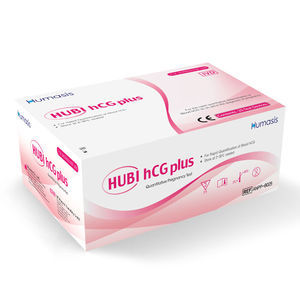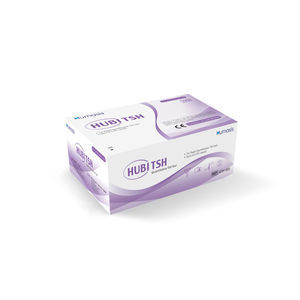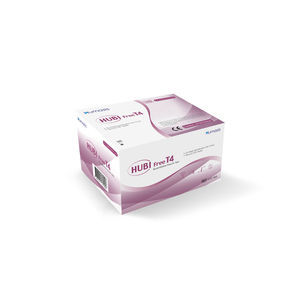

- Products
- Catalogs
- News & Trends
- Exhibitions
Rapid ovulation test AOV-8025hCGLHluteinizing hormone
Add to favorites
Compare this product
fo_shop_gate_exact_title
Characteristics
- Application field
- ovulation
- Tested parameter
- hCG, LH, luteinizing hormone, FSH, TSH, testosterone
- Sample type
- blood, cell
- Analysis mode
- immunochromatographic
- Format
- cassette
Description
HUBI LH is an in-vitro diagnostic test based on immunochromatography. The test is required to be applied to HUBI QUAN pro, an analyzer designed for quantitative détermination of Luteinizing Hormone (LH) in human blood specimens.
Luteinizing Hormone (LH) is secreted by the anterior pituitary grand. It secreted only a little amount during most of menstrual cycle. But it suddenly increases for short time in the middle part of cycle. This increase is called the LH surge and it triggers ovulation. In maies, where LH had also been called interstitial cell-stimulating hormone (ICSH), it stimulâtes Leydig cell production of testosterone. LH is a glycoprotein hormone having two subunits
(alpha-, beta-). Its structure is similar to that of the other glycoprotein hormones, Follicle Stimulating Hormone (FSH), Thyroid-Stimulating Hormone (TSH), and human Chorionic Gonadotropin (hCG).
In both maies and females, LH is essential for reproduction. In females, FSH initiâtes follicular growth, specifically affecting granulosa cells. With the rise in estrogens, LH receptors are also expressed on the maturing follicle, which causes it to produce more estradiol. As the follicle matures, the secreted of estrogen is regulated by‘positive feed -back’in the hypothalamus. At this time, LH is secreted for 24 to 48 hours. This ‘LH surge’ triggers ovulation.
Related Searches
- Assay kit
- Blood assay kit
- Serum assay kit
- Immunoassay assay kit
- Plasma assay kit
- Infectious disease detection kit
- Blood rapid diagnostic test
- Rapid lateral flow test
- Immunoassay rapid diagnostic test
- Molecular test kit
- Cassette rapid diagnostic test
- Whole blood detection kit
- Serum rapid diagnostic test
- Plasma rapid diagnostic test
- Infectious disease rapid diagnostic test
- Whole blood rapid diagnostic test
- Cassette assay kit
- Lateral flow test kit
- Urine rapid diagnostic test
- Oncology test kit
*Prices are pre-tax. They exclude delivery charges and customs duties and do not include additional charges for installation or activation options. Prices are indicative only and may vary by country, with changes to the cost of raw materials and exchange rates.






